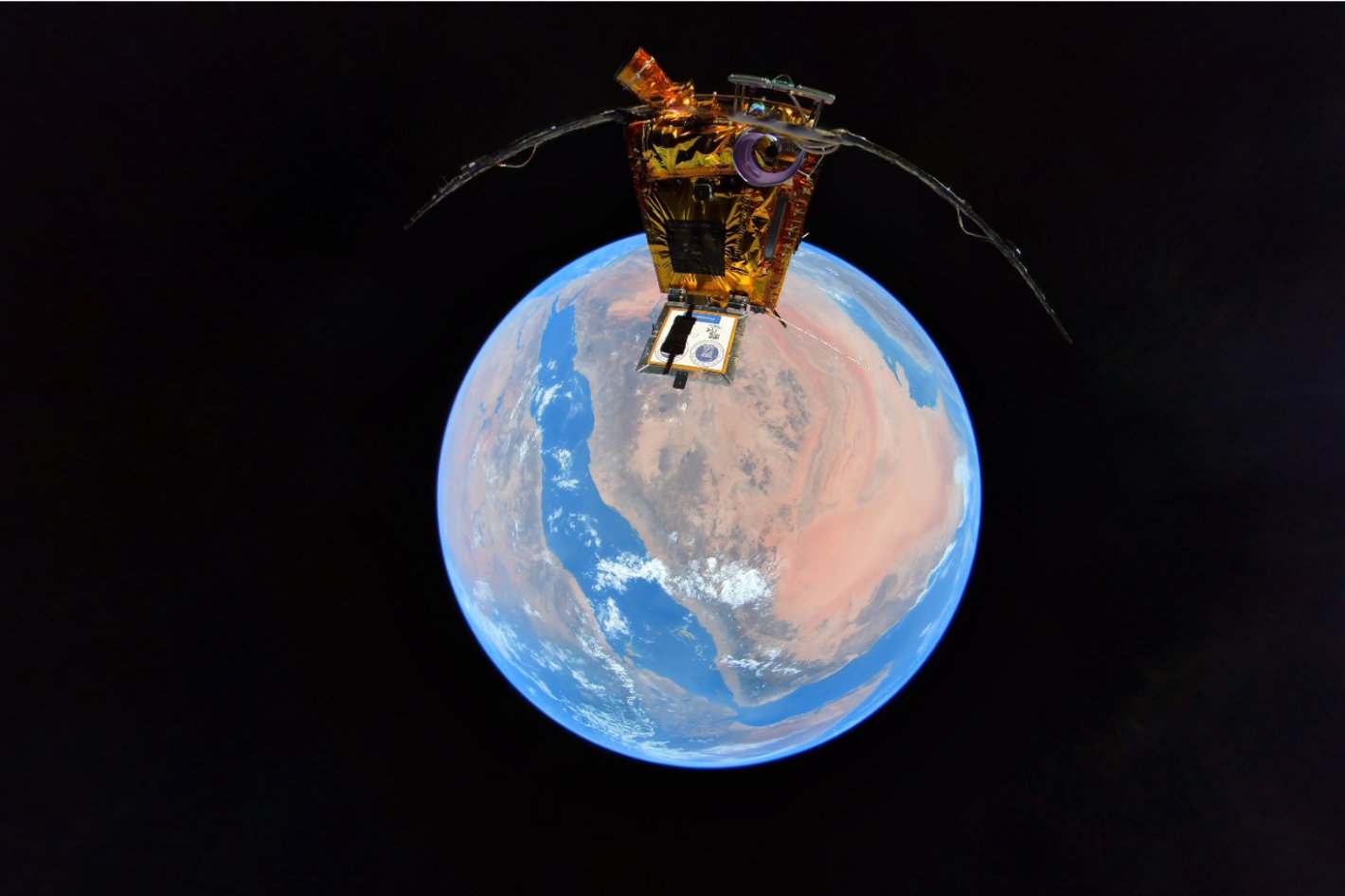
Insta360 is known for the strange ways in which their cameras have been used. In 2022, falconry expert Paul Kilma mounted Insta360 RS to an eagle for a unique birds-eye view. This year, Karman Space attached Insta360 X3 to their Eclipse weather balloon and sent it 86,000ft (26km) into the stratosphere. But the company wanted more, so on January 16th, 2023, Insta360 attached two Insta360 X2 cameras to a satellite and launched them 500km into outer space.
Insta360 worked with Media Storm and SAR satellite company Spacety to make the dream a reality. First contacts were made in July 2021, but the project really kicked off in September 2021. Insta360 already had the X3 model being prepared, but as it was not officially announced and the X2 was the best-selling 360 camera released, the company opted to use that model.
It wasn’t an easy task to prepare an action camera to support the unfamiliar environment. Insta360 X2 can handle action, but it’s safe to say it is not space-proof straight out of the box. Engineers had to modify the lens, motherboard, and more to ensure it survived the extreme climate and captured incredible 360 views of the stars, the Milky Way, and Earth.
It took 12 months to modify the action cameras, including six months of R&D. The conditions in space are extremely harsh, so the camera had to be prepared to withstand extreme heat and cold, as the camera is essentially shuttling back and forth between the tropics and the poles, with temperatures possibly reaching forty to fifty Celsius when in sunlight, and negative seventy to eighty Celsius in the dark. The engineers identified three obstacles to overcome before sending the 360 action camera into space:
First, all of X2’s materials must withstand extreme heat and cold. The satellite circles the globe every 90 minutes, shuttling between the tropics and poles at temperatures between -70°C and 50°C.
Second, it must be radiation resistant. Unlike here on Earth, the environment is entirely void of protection from the atmosphere. High-energy particles in space can quickly burn out electronic components, something practically impossible to guard against.
Finally, the camera needs a special shock and vibration-resistant design. The rocket launch is bumpy, but once in space, the camera will slowly rotate, constantly changing the angle and shooting position. Since no one will be up there to adjust the camera, it must resist serious impact. It’s also important that the satellite structure does not cover the lenses so X2 can successfully shoot 360 footage with proper stitching.
The solar-powered satellite was initially scheduled to launch in 2022 but had to be postponed due to COVID-19. One year later, Insta360 X2 rocketed to new heights. According to Insta360, the project runs on hard work, but a fair bit of luck, too. Space can be unpredictable, and there is no backup hardware or software if the camera runs into any issues. Luckily, both cameras and their sensors are still fully functioning and offer an incredible look at outer space.
Spacety provides a communication network to retrieve the footage. The camera and satellite are connected using a USB Ethernet port for transmission, which was specially adapted for X2.
The project is designed to be running for 2 years, but Insta360 notes that “it also has the possibility to function for longer. We have also prepared the measure that after it went out, it will proactively leave the orbit and get burned in the space.” The company is aware that the project also has imperfections as it does not have hardware and software backups for space radiation, but… “it’s still running normally with a bit of luck involved.”
This project serves more than the simple bragging rights for having the first working action camera with the longest permanence in space. Insta360 says that “having finished this project also proves that Insta360 has the capability to develop products that can endure extreme conditions.”
